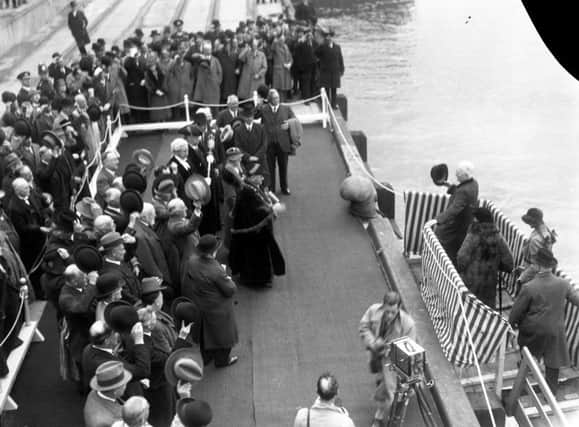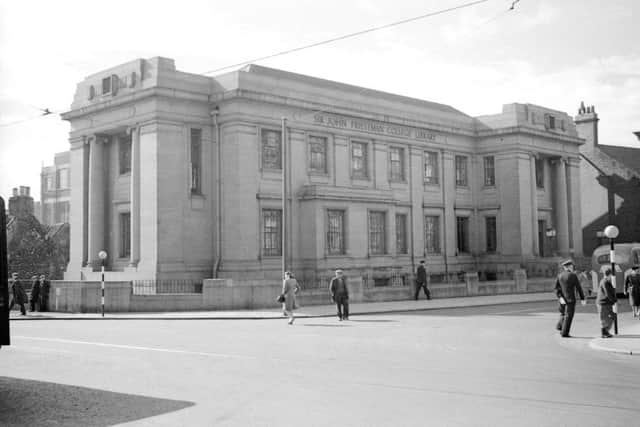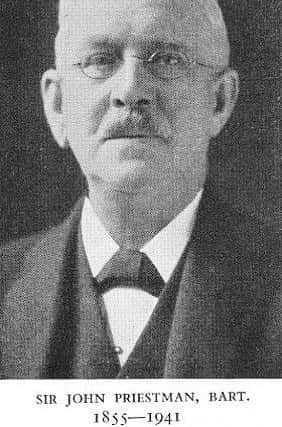The man who donated millions for the good of Sunderland


It is quite some statement but it’s a claim that should rightfully go to Sir John Priestman, according to Philip Curtis of the Sunderland Antiquarian Society.
Yesterday, we began looking at some of Sir John’s greatest achievements with the help of Philip.


Advertisement
Hide AdAdvertisement
Hide AdBut we have barely scratched the surface yet. Today, we conclude our two-part study of a man who helped to shape much of modern day Sunderland.
Imagine parting with £3.7m.
Not many people have the capability to do so.
But Sir John Priestman did it in 1930, and he did to contribute towards the building of Monkwearmouth Hospital in Newcastle Road. Not only that, he made sure the highest of high were there to mark Sunderland’s big occasion.


The Prince of Wales was there for the laying of the foundation stone of the hospital.
He could hardly have done otherwise.
After all, he had received £100,000 a decade earlier from Sir John towards the Earl Haig Homes which were being built for ex-servicemen.
Advertisement
Hide AdAdvertisement
Hide AdThe stone was duly laid by the prince in July 1930. However, it was Sir John who officially opened the hospital two years later in 1932.


Sir John’s generosity to the town did not stop there - it went substantially further.
A sum of £60,000 (£3.8m today) was given to build a new eye infirmary in the town and a further £35,000 in 1935 (£2.2m today) to rebuild St Michael’s Church (now The Minster).
A further £20,000 in 1936 (£1.3m today) was given for the erection of a library in the extension of Sunderland Technical College and it was named The Priestman Library.
Advertisement
Hide AdAdvertisement
Hide AdThere were numerous other donations given to many of the churches throughout the town.


Hallgarth Mission was built in Bright Street with his assistance and new schoolrooms for Thompson Memorial Hall were also funded.
In 1935, Sir John was invited to open the newly built Corporation Quay.
This he did after travelling up the river and arriving at the quay by boat.
Advertisement
Hide AdAdvertisement
Hide AdSir John lived in his residence ‘Cliffside’ at Roker. This was on the corner site of Side Cliff Road overlooking the sea, opposite Roker Park. Today the site is occupied partly by new houses and David Gardens.
Sir John remained there until the outbreak of the Second World War when he decided to move into the country away from the threat of German bombers.
He moved to Slaley Hall, a large country house in Northumberland, which he owned.
It was there that Sir John died on August 5, 1941. His widow, Sarah Marie, continued to live there until her death in 1971.
Advertisement
Hide AdAdvertisement
Hide AdToday the house is a hotel and golf centre with one of the courses known as The Priestman Course.
Philip asks: “So what is there in Sunderland to acknowledge the legacy that Sir John Priestman left the town? Sadly there is no statue of the man.
“However there is a small bronze bust of his head on the exterior of The Priestman Hall Building in Green Terrace.
“There is also a plaque in The Minster acknowledging his role in the rebuilding of the church and a street in Ford Estate was named after him – Priestman Close.
Advertisement
Hide AdAdvertisement
Hide Ad“His daughter, Barbara, also has a school named after her - Barbara Priestman Academy. The Priestman Charity Trust still operates within the city and donates close to half a million pounds each year.
“One wonders why there is no permanent statue to Sir John. There are few statues in Sunderland – most are in Mowbray Park and were erected in the 19th century.
“Our football club honoured Bob Stokoe with a statue and there is a movement to have one made of Charlie Hurley.
“Perhaps it is the fact that Sir John died in 1941 and the years that followed were taken up with war.
Advertisement
Hide AdAdvertisement
Hide Ad“Consequently there was no demand for any permanent acknowledgment of Sir John’s generosity to the town and, with the passing of the years, generations of Wearsiders most probably had little or no knowledge of the fantastic work Sir
John did for Sunderland.
“Perhaps it is time for a rethink and a statue of the great man erected somewhere in the city – it’s not too late.”